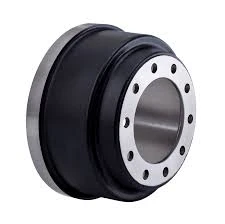
-
 Afrikaans
Afrikaans -
 Albanian
Albanian -
 Amharic
Amharic -
 Arabic
Arabic -
 Armenian
Armenian -
 Azerbaijani
Azerbaijani -
 Basque
Basque -
 Belarusian
Belarusian -
 Bengali
Bengali -
 Bosnian
Bosnian -
 Bulgarian
Bulgarian -
 Catalan
Catalan -
 Cebuano
Cebuano -
 Corsican
Corsican -
 Croatian
Croatian -
 Czech
Czech -
 Danish
Danish -
 Dutch
Dutch -
 English
English -
 Esperanto
Esperanto -
 Estonian
Estonian -
 Finnish
Finnish -
 French
French -
 Frisian
Frisian -
 Galician
Galician -
 Georgian
Georgian -
 German
German -
 Greek
Greek -
 Gujarati
Gujarati -
 Haitian Creole
Haitian Creole -
 hausa
hausa -
 hawaiian
hawaiian -
 Hebrew
Hebrew -
 Hindi
Hindi -
 Miao
Miao -
 Hungarian
Hungarian -
 Icelandic
Icelandic -
 igbo
igbo -
 Indonesian
Indonesian -
 irish
irish -
 Italian
Italian -
 Japanese
Japanese -
 Javanese
Javanese -
 Kannada
Kannada -
 kazakh
kazakh -
 Khmer
Khmer -
 Rwandese
Rwandese -
 Korean
Korean -
 Kurdish
Kurdish -
 Kyrgyz
Kyrgyz -
 Lao
Lao -
 Latin
Latin -
 Latvian
Latvian -
 Lithuanian
Lithuanian -
 Luxembourgish
Luxembourgish -
 Macedonian
Macedonian -
 Malgashi
Malgashi -
 Malay
Malay -
 Malayalam
Malayalam -
 Maltese
Maltese -
 Maori
Maori -
 Marathi
Marathi -
 Mongolian
Mongolian -
 Myanmar
Myanmar -
 Nepali
Nepali -
 Norwegian
Norwegian -
 Norwegian
Norwegian -
 Occitan
Occitan -
 Pashto
Pashto -
 Persian
Persian -
 Polish
Polish -
 Portuguese
Portuguese -
 Punjabi
Punjabi -
 Romanian
Romanian -
 Russian
Russian -
 Samoan
Samoan -
 Scottish Gaelic
Scottish Gaelic -
 Serbian
Serbian -
 Sesotho
Sesotho -
 Shona
Shona -
 Sindhi
Sindhi -
 Sinhala
Sinhala -
 Slovak
Slovak -
 Slovenian
Slovenian -
 Somali
Somali -
 Spanish
Spanish -
 Sundanese
Sundanese -
 Swahili
Swahili -
 Swedish
Swedish -
 Tagalog
Tagalog -
 Tajik
Tajik -
 Tamil
Tamil -
 Tatar
Tatar -
 Telugu
Telugu -
 Thai
Thai -
 Turkish
Turkish -
 Turkmen
Turkmen -
 Ukrainian
Ukrainian -
 Urdu
Urdu -
 Uighur
Uighur -
 Uzbek
Uzbek -
 Vietnamese
Vietnamese -
 Welsh
Welsh -
 Bantu
Bantu -
 Yiddish
Yiddish -
 Yoruba
Yoruba -
 Zulu
Zulu
The primary drawback of drum brakes in modern automotive design and performance
The Greatest Disadvantage of Drum Brakes
Drum brakes have been a staple in the automotive industry for decades, commonly employed in many vehicles, particularly in older models and certain cost-sensitive applications. While they have their merits—such as simplicity, cost-effectiveness, and efficient braking force—they also come with significant disadvantages. Among these, the greatest disadvantage of drum brakes is their tendency to overheat during prolonged use, leading to compromised braking performance and safety.
The Greatest Disadvantage of Drum Brakes
As the temperature in the drum rises, several issues can arise. The most concerning is “brake fade.” Brake fade occurs when the brake components become so hot that their effectiveness diminishes. This means that the driver has to apply more pressure on the brake pedal just to achieve the same braking force, which can lead to longer stopping distances and an increased risk of accidents. In severe situations, drivers may find that they have to pump the brakes to regain some semblance of control, which can be both dangerous and alarming in an emergency.
the greatest disadvantage of drum brakes is

Moreover, the design of drum brakes makes them less effective in wet conditions. Water can collect inside the drum, which not only reduces friction but can also lead to a phenomenon known as “oiling.” When water mixes with brake dust and other contaminants, it creates a slippery surface that can cause the brakes to perform poorly, sometimes even leading to a complete failure to stop. In comparison, disc brakes are typically better at shedding water due to their exposed rotors, thus offering more reliable performance in adverse weather.
Another aspect to consider is maintenance and replacement costs. Although drum brakes initially cost less to manufacture and install, they may require more frequent maintenance than their disc counterparts due to their tendency to wear out faster under extreme conditions. The drum itself can become warped from excessive heat, necessitating costly repairs or replacements. Furthermore, the brake shoes in drum systems wear unevenly, leading to decreased efficiency and safety over time, which could ultimately negate the cost savings of having drum brakes installed in the first place.
In addition to these mechanical shortcomings, the evolution of automotive technology has made drum brakes less desirable. Modern vehicles often prioritize performance and safety, necessitating braking systems that can withstand the demands of high-speed driving and frequent stop-and-go scenarios. Consequently, many manufacturers are moving away from drum brakes in favor of disc brakes, which provide superior heat dissipation, enhanced stopping power, and greater consistency in various driving conditions.
In conclusion, while drum brakes have served a functional purpose in the automotive world, their greatest disadvantage—their propensity to overheat—significantly impacts their overall effectiveness and safety. As vehicles continue to evolve and the demands on braking systems increase, it is likely that drum brakes will become an increasingly rare sight on our roads. For drivers who prioritize optimal braking performance and safety, disc brakes offer a compelling alternative that addresses many of the shortcomings inherent in drum brake systems.
-
What Are Drum BrakesNewsJul.07,2025
-
Understanding Brake Drum MaterialNewsJul.07,2025
-
Semi-Trailer Brake Drum: A Key Component for Extreme Loads and Long-Distance TransportNewsJul.07,2025
-
Drum Brake Pads for SaleNewsJul.07,2025
-
Brake Drums for SaleNewsJul.07,2025
-
Brake Drum ManufacturerNewsJul.07,2025
-
Aluminum Brake Drums: The Future of High-Performance CarsNewsJul.07,2025
